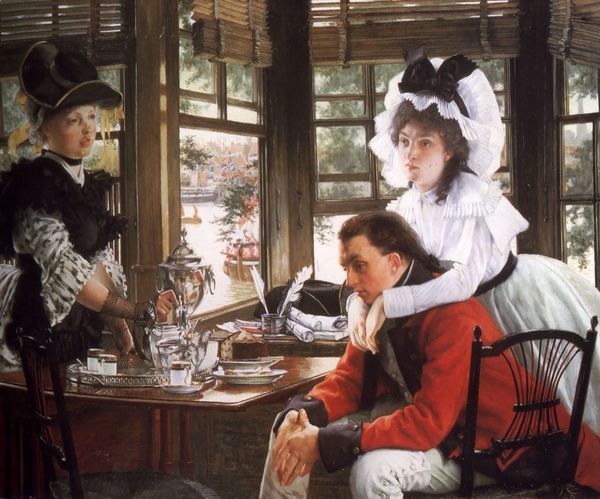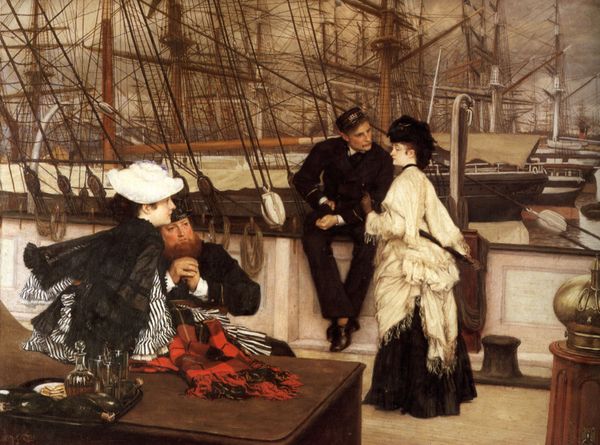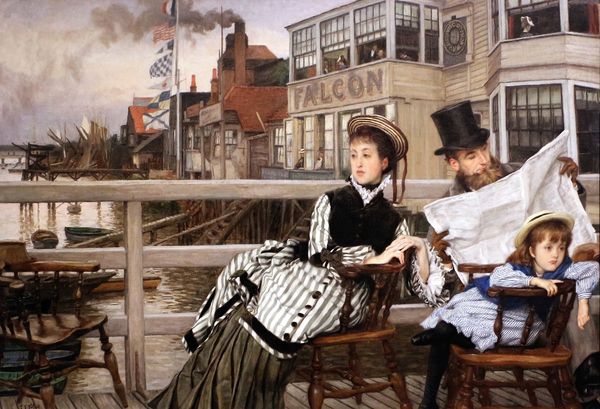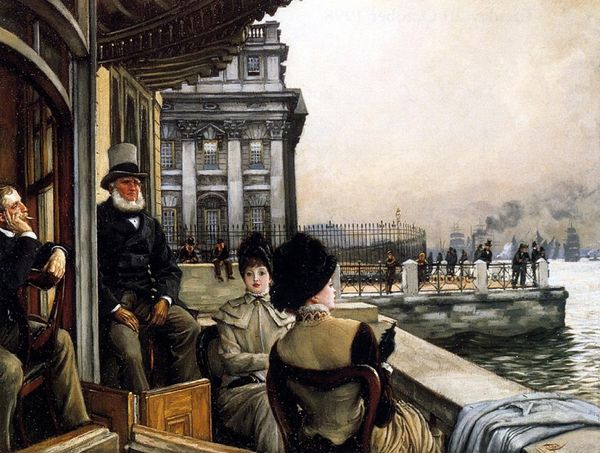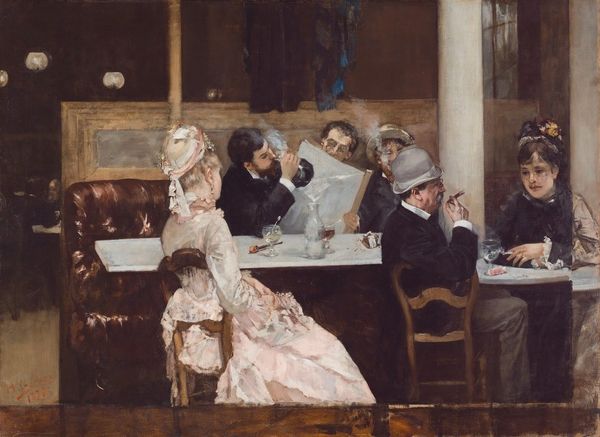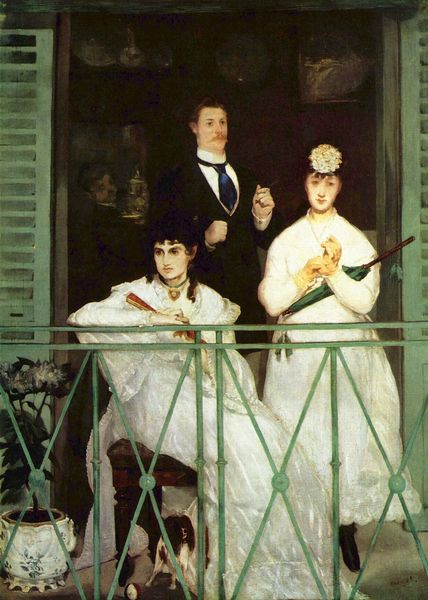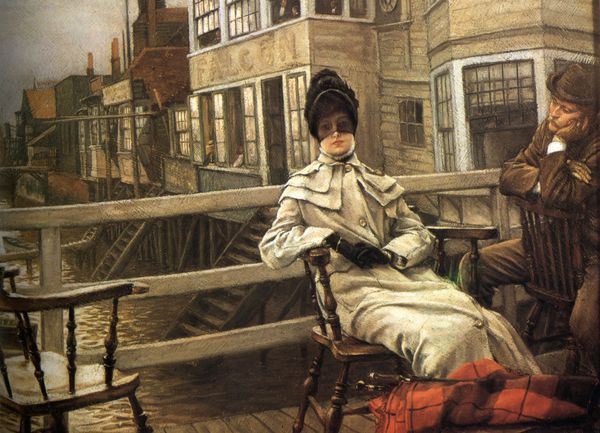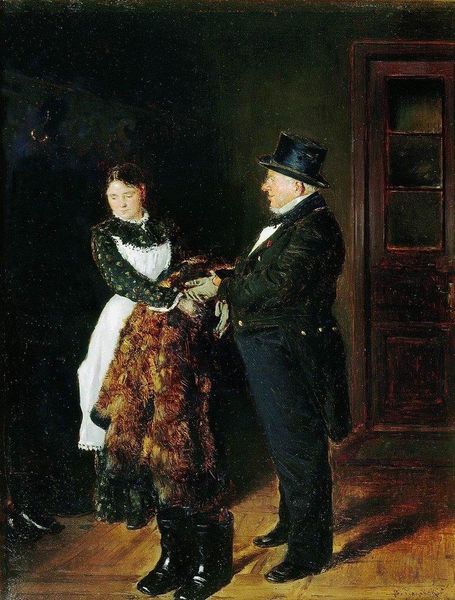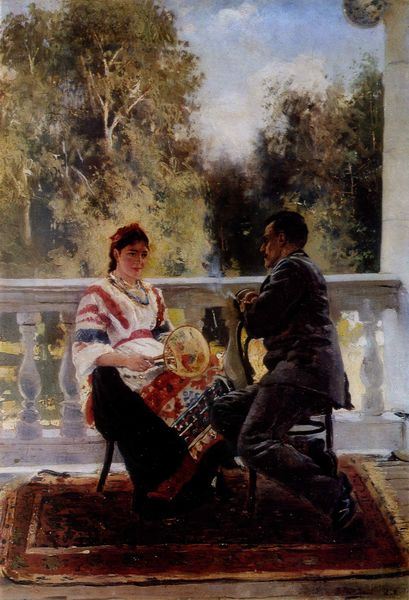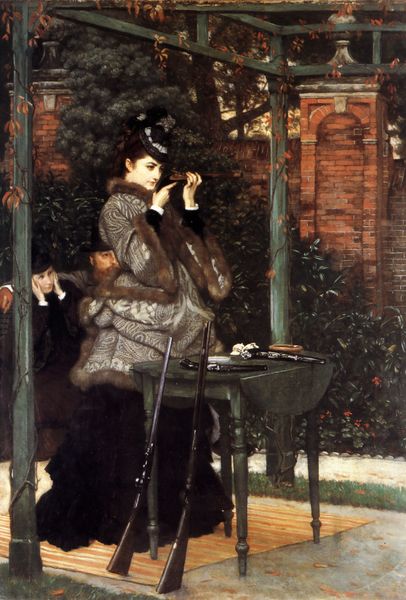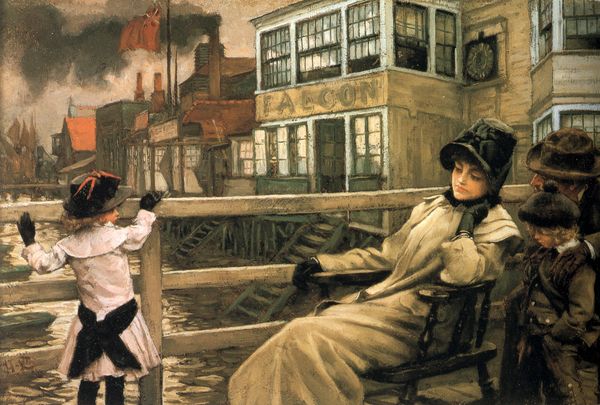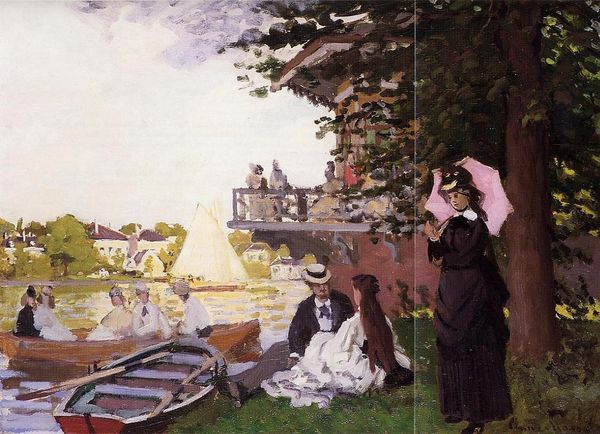
Copyright: Public domain
James Tissot made "The Captain's Daughter" with oil paint on canvas. These are traditional materials for painting, but it's interesting to consider them in relation to the social context of the work. Tissot has paid meticulous attention to surface detail, from the grain of the wooden decking to the weave of the Captain's clothing. Notice how this painstaking detail creates a sense of weight and texture in the scene, but it also reflects the labor involved in producing these goods. The painting also offers a glimpse into the world of maritime trade and commerce. The Captain and his daughter represent a class of people who benefited from global trade and industry. Her dress is evidence of access to mass-produced goods. The steamships and docks are further evidence of commerce, and the labor involved in production. Considering the materials and making of this painting helps us to understand the social context in which it was created. It also challenges us to think about the relationship between art, craft, and industry, and between subject matter and social class.
Comments
No comments
Be the first to comment and join the conversation on the ultimate creative platform.
